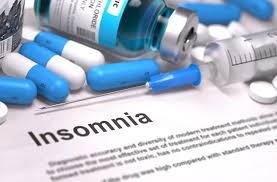- Home
- Editorial
- News
- Practice Guidelines
- Anesthesiology Guidelines
- Cancer Guidelines
- Cardiac Sciences Guidelines
- Critical Care Guidelines
- Dentistry Guidelines
- Dermatology Guidelines
- Diabetes and Endo Guidelines
- Diagnostics Guidelines
- ENT Guidelines
- Featured Practice Guidelines
- Gastroenterology Guidelines
- Geriatrics Guidelines
- Medicine Guidelines
- Nephrology Guidelines
- Neurosciences Guidelines
- Obs and Gynae Guidelines
- Ophthalmology Guidelines
- Orthopaedics Guidelines
- Paediatrics Guidelines
- Psychiatry Guidelines
- Pulmonology Guidelines
- Radiology Guidelines
- Surgery Guidelines
- Urology Guidelines
Suvorexant --New safer insomnia treatment

Japan: Suvorexant could be a targeted treatment for insomnia with fewer physical side effects than hypnotics -- commonly used treatment for insomnia, finds a recent study published in the PNAS journal.
Insomnia, one of the most common sleep disorders, represents an important health burden. The majority of patients with insomnia are treated with hypnotic agents. The most common hypnotic agents for the treatment of insomnia are γ-aminobutyric acid (GABA) agonists that enhance the function of GABA, a major inhibitory neurotransmitter. One of the concerns of this class of hypnotic agents is that patients may become physically and/or cognitively impaired while the drug is in effect.
Suvorexant, an orexin receptor antagonist, was approved as a treatment for insomnia in the US and Japan in 2014. Orexin receptor antagonists specifically inhibit the orexin-mediated wake-promoting system, supposedly without affecting the whole brain.
According to the new study, suvorexant has good efficacy and fewer side effects. The researchers found that compared with the GABA receptor agonist brotizolam, the orexin receptor antagonist suvorexant induced less impairment in body balance after taking the medicine. This makes suvorexant a more targeted treatment than GABA agonists.
Jaehoon Seol, University of Tsukuba, Tsukuba, Ibaraki, Japan, and colleagues evaluated the side-effect profile of an orexin receptor antagonist and GABAA receptor agonist on physical/cognitive functions upon forced awakening.
This double-blind, randomized, placebo-controlled, cross-over study was conducted on 30 healthy males. 15 minutes before bedtime, the subjects took a pill of suvorexant (20 mg), brotizolam (0.25 mg), or placebo and were forced awake 90 min thereafter. Physical- and cognitive-function tests were performed before taking the pill, after forced awakening, and the next morning.
Read Also: Insomnia linked to increased stroke and heart attack risk among young adults
Key findings of the study include:
- Polysomnographic recordings revealed that the efficacies of the hypnotic agents in prolonging total sleep time (∼30 min) and increasing sleep efficiency (∼6%) were comparable.
- When the subjects were allowed to go back to sleep after the forced awakening, the sleep latency was shorter under the influence of hypnotic agents (∼2 min) compared to the placebo trial (24 min), and the rapid eye movement latency was significantly shorter under suvorexant (98.8, 81.7, and 48.8 min for placebo, brotizolam, and suvorexant, respectively).
- Although brotizolam significantly impaired the overall physical/cognitive performance (sum of z score) compared with placebo upon forced awakening, there was no significant difference in the total z score of performance between suvorexant and placebo.
- The score for static balance with the eyes open was higher under suvorexant compared to brotizolam administration. The energy expenditure was lower under suvorexant and brotizolam compared with the placebo.
- The effect size of brotizolam to reduce the energy expenditure was larger than that of suvorexant.
Read Also: New insomnia drug does not impair driving performance next day
"One concern about the use of GABA agonists is their side effects - they might impair the normal ability to respond to unexpected stimuli during sleep in urgent situations," says Seol. "A drug that specifically acts on brain receptors involved in wakefulness, rather than the whole brain, could avoid this."
Suvorexant induced fewer impairments in body balance upon awakening than brotizolam. This could be associated with the cerebellum, a part of the brain that coordinates balance. Namely, the cerebellum contains GABAA receptors but not orexin receptors. In this case, brotizolam may have affected cerebellar functioning, while suvorexant did not.
"This is the first study to investigate the potential side effects of suvorexant and to compare these with those of brotizolam," says Masashi Yanagisawa, lead author of the study. "Also, suvorexant was just as effective as brotizolam in the treatment of insomnia, with comparable effects on sleep duration and efficiency."
The study, "Distinct effects of orexin receptor antagonist and GABAA agonist on sleep and physical/cognitive functions after forced awakening, is published in the journal Proceedings of the National Academy of Sciences of the United States of America (PNAS).

Disclaimer: This site is primarily intended for healthcare professionals. Any content/information on this website does not replace the advice of medical and/or health professionals and should not be construed as medical/diagnostic advice/endorsement or prescription. Use of this site is subject to our terms of use, privacy policy, advertisement policy. © 2020 Minerva Medical Treatment Pvt Ltd